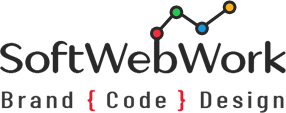Custom Application Development
Custom application development is a service that Soft Web Work offers to clients who need tailored software solutions to meet their specific business needs. Here’s a step-by-step overview of the custom application development process:
Requirement Analysis:
The first step in custom application development is understanding the client’s needs and objectives. This involves detailed discussions with the client to gather requirements, identify pain points, and define project goals.
Project Planning:
Create a project plan that outlines the scope, timeline, budget, and resources required for the custom application development. Define the project’s architecture, technology stack, and any third-party integrations needed.
Design and Prototyping:
Develop wireframes and prototypes to visualize the application’s user interface (UI) and user experience (UX). Design the application’s look and feel while keeping the client’s branding and usability in mind.
Development:
Begin the actual development process, following the chosen technology stack and coding standards. Break down the project into smaller milestones or sprints, allowing for iterative development and testing.
Quality Assurance (QA):
Implement a robust QA process to identify and fix bugs and issues. Conduct unit testing, integration testing, and user acceptance testing (UAT) to ensure the application functions correctly.
Deployment:
Deploy the custom application to the client’s server environment, whether it’s on-premises or in the cloud. Configure databases, servers, and any necessary infrastructure.
User Training and Documentation:
Provide training to the client’s staff or end-users on how to use the custom application effectively. Create documentation, user guides, and FAQs to assist users.
Maintenance and Support:
Offer ongoing maintenance and support services to address any issues, updates, or enhancements needed after the application goes live. This may include bug fixes, performance improvements, and security updates.
Scalability and Future-proofing:
Design the custom application with scalability in mind so that it can accommodate future growth and additional features. Keep the technology stack up-to-date to ensure long-term viability.
Security and Compliance:
Implement robust security measures to protect sensitive data and ensure compliance with relevant regulations and standards, such as GDPR or HIPAA, depending on the application’s purpose.
Client Collaboration:
Maintain open communication with the client throughout the development process. Provide regular updates, demos, and opportunities for feedback to ensure the application aligns with the client’s vision.
Testing and User Acceptance:
Conduct thorough testing, including performance testing and security testing, to ensure the application meets quality standards. Involve the client in the UAT phase to validate that the application meets their requirements.
Final Deployment:
Once the client approves the application, deploy it for full production use. Monitor its performance and address any issues that may arise during the initial usage phase.
Post-launch Optimization:
Continuously monitor the application’s performance and gather user feedback to make necessary improvements and optimizations over time.
